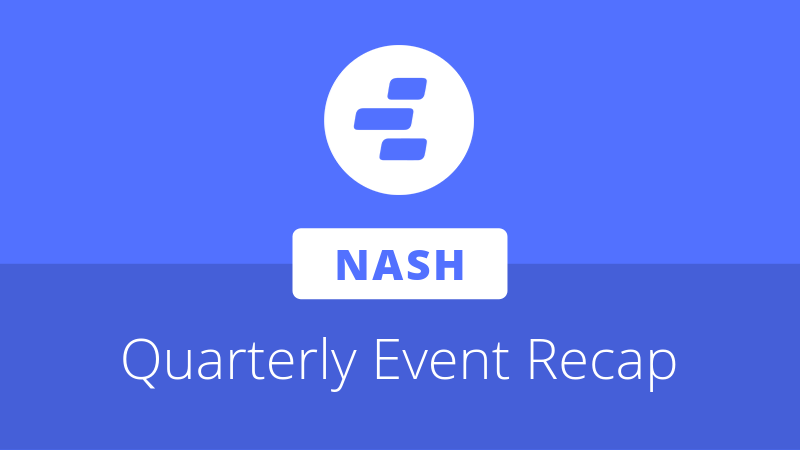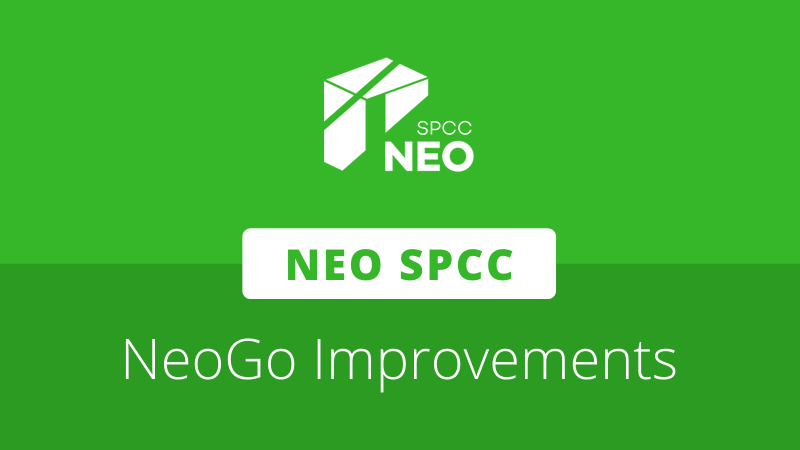
Nash recently held its 2019 Q4 quarterly report event, which was a live streamed presentation that focussed on Building and Iterating. The event offered an overview of the progress achieved in applied research, security, user experience (UX), and the announcement of the tentative launch of Nash Pay in Q2 2020. Following the presentation, the Nash founders participated in an ask me anything (AMA), taking questions from community members.
For previous quarterly reports, Nash each event in a different country; however, Nash intimated that future events will likely take place online.
Infrastructure
In Q4 2019, Nash implemented the multi-party computation (MPC), which allows parties that do not trust each other to do shared computations, while keeping their individual inputs private. According to Nash co-founder, Ethan Fast, the MPC can “split the [user’s] private key into multiple components so that the user controls only one part of it, even though the whole key [is] somewhere else. This allows us to enforce policies to enhance the security of your account.”
Alongside the MPC, Fast’s applied research team implemented decentralized API keys on the Nash platform. The API keys — in conjunction with the MPC — allow for partnering liquidity providers and market makers to access the Nash exchange, with the goal to offer the same services at the same speeds as centralized exchanges.
Nash co-founder, Tom Saunders, reported liquidity partners have offered valuable feedback on what it is that they need from Nash’s APIs to communicate through its TypeScript client. Additionally, Saunders’ team reported improved documentation for the Python API, as well as implemented support for Raspberry Pi.
Lastly, Nash was able to decrease its continuous integration and continuous delivery (CI/CD) infrastructure costs by 80%, which has been a major initiative. The team also implemented a series of monitoring and alerting tools that allows Nash developers to “actively hunt” and resolve issues.
Platform
In Q4 2019, Nash launched the exchange minimum viable product (MVP), which co-founder, Fabio Canesin, stated was “very important” for the project. Since its launch, the team has focused on enhancing the platform’s stability, and redesigning the application, so it is “cleaner and easier to scale.” Additionally, in the previous quarter, Nash released videos that offer walkthroughs of how to use the Nash application and its main flows.
When Nash launched its MVP, Nash token (NEX) staking was available, but there was a limitation of 15 stakes per user. At the time, if Nash had allowed users to makes more than 15 separate stakes, then the user would’ve had to pay the Neo blockchain’s GAS fees for each additional stake. Since the launch of the MVP, Nash has integrated a new staking contract that allows users to create an unlimited amount of stakes.
Lastly, Nash integrated support for Bitcoin wallets, which involved many moving pieces. Saunders cited an example, that the Nash backend required generating and monitoring addresses based on Nash’s 12-word system. Further, Bitcoin wallet support has also made way for integrating other Bitcoin-based wallets, such as Litecoin and Bitcoin Cash.
Concerning trading Bitcoin on the Nash exchange, Saunders said, “we’re running Bitcoin trading locally on the internal TestNet. Expect to have the team testing it as a whole in the next couple of weeks.”
Mobile app
In November 2019, Nash launched an update for its mobile application, adding wallet functionality that allows users to monitor their portfolio, as well as to send and receive assets. Nash’s initial target market was long-term token holders who seek to store their digital assets on private wallets.
Improvements to the mobile application focussed on the UX, such as increased session times, biometric login, and a payment request link that can be shared via social media and communication applications.
Further, Canesin offered an overview of Nash’s four-step plan for the deployment of the mobile application. The first step focused on identity and KYC, which required users to download a mobile app and register for the platform.
The second step — where Nash is currently in the process — has focussed on implementing wallet features. Thus far, Nash has improved the design and UX of the mobile application based on feedback and metrics that track platform use. Future iterations, Canesin said, “[will allow for] significantly faster account creation process, skipping seed verification and 2FA.”
The third step will implement payment functionality via Nash Pay. In the presentation, Nash stated it anticipates Nash Pay designs to be among its upcoming deliverables.
The final step in the launch of the Nash mobile application will include implementing trading on the mobile application.
Nash Pay and swag store
During the quarterly report event, Nash announced the tentative launch of the Nash Pay MVP in Q2 2020. Currently, the team is focusing on offering support for Europe and integrating Nash Pay and fiat on-ramping in that market.
Within the Nash Pay application, users will have a fiat onramp to buy and sell via credit card, which will allow an equivalent up to US $2,500 in purchasing power.
Alongside Nash Pay, the team will also launch a Nash swag and merchandise store. Co-founder, Fabian Wahle, pointed out the Nash swag store will be among the first applications for Nash Pay. Additionally, Nash is in discussions about potential partnerships with vendors, and has applied to be able to integrate with Shopify.
User feedback and customer service
To solicit input on platform improvements, Nash conducted more than 100 user interviews in Q4 2019. Nash stated the community and support team provided valuable feedback on bugs and potential features.
Early feedback received from early investors has generally been positive. Of early investors, Canesin said, “[they are] happy with what the team has done, and the complexities of what has been delivered. Prior to Nash, it was unproven for blockchain and decentralization to be done in this way.”
Regarding Nash customer service, team reported support tickets have been increasingly handled more efficiently, with a 95% user satisfaction rate. Nash pointed out that 75% of support tickets were able to be solved with “one-touch” in 22 seconds or less.
Looking forward
The Nash team of 32 employees intends to continue building the infrastructure for the Nash platform, as well as minimal external advertising of the platform. Canesin pointed out, the project is in an iteration period, and the product is still in its MVP phase. While Nash recently closed its referral program, the team will intends to rely on its community to push the brand out. Nash is currently planning future strategies, which will include activating the Nash community.
As the German language is the second most popular in the Nash community, there will be a German translated version of the website and platform launched in Q1 2020. Nash aims to increase the availability of languages according to the needs of its user base.
Lastly, while it is currently unregulated to trade stablecoins in European markets, Wahle stated the Nash legal team have found a legally regulated way to do so. Once Nash can list tokens like USDC, they’ll be the first exchange in Europe to offer such markets. Nash tentatively expects to offer stablecoin markets in Europe in Q2 2020.
The full presentation and AMA can be found at the link below:
https://youtu.be/V-2Wr2BDMbk







About The Author: Dylan Grabowski
Dylan is a reformed urban planner with a passion for covering the Neo ecosystem. His objective as a writer for Neo News Today is to report news in an objective, fact-based, non-sensational manner. When not behind a computer screen, he can be found in the mountains rock climbing. Find Dylan on Twitter (@GrabowskiDylan).
More posts by Dylan Grabowski